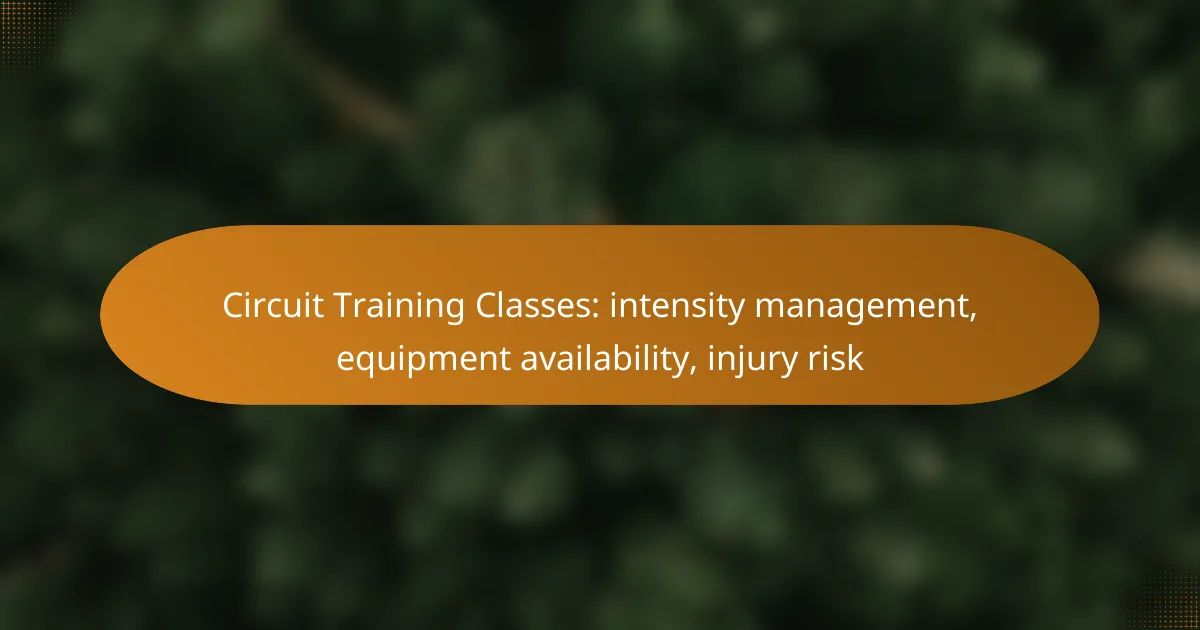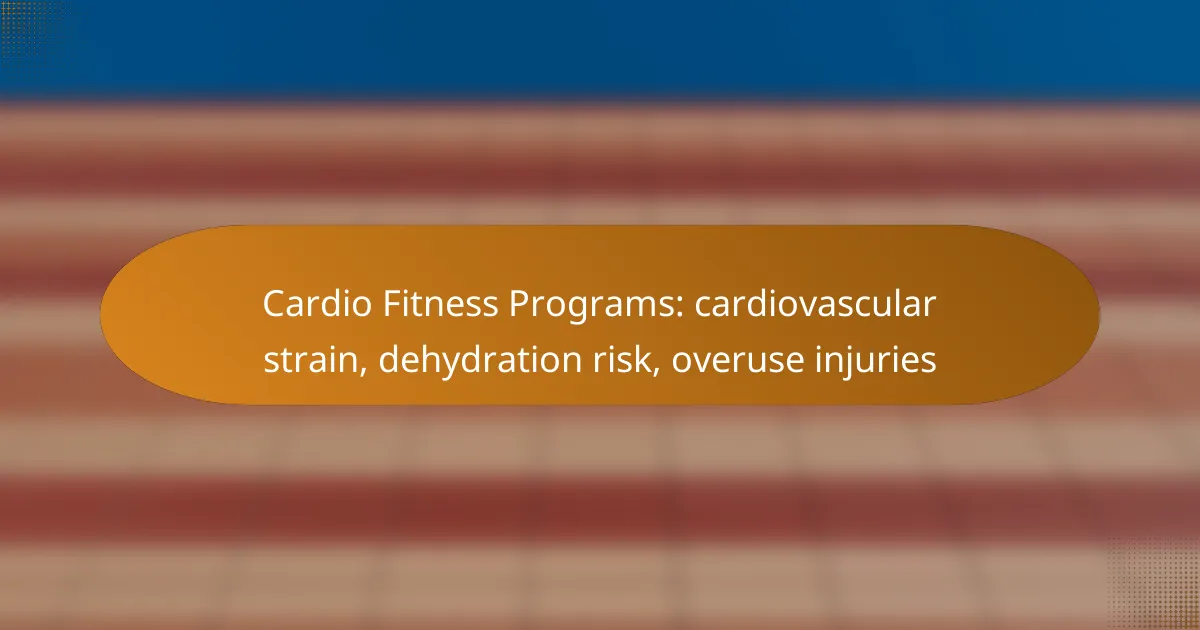Cycling in urban environments presents unique challenges, particularly concerning traffic risks, equipment reliability, and physical strain. High vehicle volumes and unpredictable road conditions increase the likelihood of accidents, while equipment failures like flat tires and brake issues can compromise safety. By adopting proactive strategies and maintaining their gear, cyclists can navigate these risks more effectively and enjoy a safer riding experience.

What are the traffic risks for cyclists in urban areas?
Cyclists in urban areas face significant traffic risks primarily due to the high volume of vehicles, complex road layouts, and the behavior of drivers. These factors contribute to a higher likelihood of accidents and injuries for cyclists navigating city streets.
High accident rates at intersections
Intersections are critical points where many accidents involving cyclists occur. The combination of turning vehicles, pedestrians, and cyclists can create hazardous situations, especially if traffic signals are not clearly visible or obeyed. Cyclists should approach intersections with caution, ensuring they are visible and aware of their surroundings.
To mitigate risks, cyclists can use designated bike lanes where available and signal their intentions clearly to other road users. Understanding the common patterns of traffic flow at specific intersections can also help cyclists anticipate potential hazards.
Distracted drivers and cyclists
Distracted driving is a major risk factor for cyclists, as drivers may not notice cyclists due to phone use, adjusting controls, or other distractions. Similarly, cyclists can also become distracted, which can lead to accidents. Staying focused on the road and avoiding distractions is crucial for both parties.
To enhance safety, cyclists should wear bright clothing and use lights, especially in low visibility conditions, to increase their visibility to drivers. Additionally, maintaining a safe distance from vehicles can provide cyclists with more reaction time in case of sudden movements from drivers.
Insufficient bike lanes
The lack of adequate bike lanes in urban areas increases the risk of accidents as cyclists share the road with motor vehicles. Narrow or poorly maintained bike lanes can lead to dangerous situations, particularly when vehicles encroach on these spaces. Advocating for better infrastructure is essential for improving safety for cyclists.
Cyclists should familiarize themselves with the layout of their city’s bike lanes and choose routes that prioritize safety. When bike lanes are absent, cyclists should ride assertively in traffic, following all road rules and positioning themselves where they are most visible to drivers.

How can cyclists mitigate traffic risks?
Cyclists can reduce traffic risks by employing strategies that enhance visibility, improve riding techniques, and leverage technology. These measures can significantly lower the chances of accidents and ensure safer rides on busy roads.
Use of reflective gear
Wearing reflective gear is crucial for increasing visibility, especially during low-light conditions such as dawn, dusk, or nighttime. Items like vests, armbands, and ankle bands can make cyclists more noticeable to drivers, reducing the likelihood of collisions.
When selecting reflective gear, opt for materials that are bright and have high reflectivity. Consider using gear that meets safety standards, such as those outlined by the American National Standards Institute (ANSI), to ensure maximum effectiveness.
Adopting defensive riding techniques
Defensive riding techniques involve being aware of your surroundings and anticipating potential hazards. Cyclists should maintain a safe distance from vehicles, signal their intentions clearly, and avoid riding in blind spots.
Practicing techniques like scanning the road ahead, using mirrors, and being prepared to react to sudden changes in traffic can greatly enhance safety. Regularly reviewing local traffic laws can also help cyclists stay compliant and informed.
Utilizing bike navigation apps
Bike navigation apps can assist cyclists in choosing safer routes by providing information on bike lanes, traffic conditions, and elevation changes. Popular apps like Google Maps and Komoot offer cycling-specific directions that prioritize bike-friendly paths.
When using navigation apps, ensure your device is charged and securely mounted on your bike. Regularly update the apps to access the latest features and road data, which can help avoid high-traffic areas and improve overall safety.

What equipment issues do cyclists face?
Cyclists encounter various equipment issues that can affect their safety and riding experience. Common problems include flat tires, brake failures, and inadequate lighting, all of which require regular attention and maintenance to ensure safe cycling.
Flat tires and maintenance challenges
Flat tires are one of the most frequent issues cyclists face, often caused by punctures from sharp objects or wear and tear. Regularly checking tire pressure and inspecting for damage can help prevent flats. Carrying a spare tube and a pump can also minimize downtime during a ride.
Maintenance challenges extend beyond flat tires; cyclists should routinely clean and lubricate their chains, check brake pads, and ensure gears shift smoothly. A simple checklist can help: inspect tires before each ride, clean the chain weekly, and perform a thorough bike check monthly.
Brake failure risks
Brake failure poses a significant risk for cyclists, especially in emergency situations. Regularly inspecting brake pads for wear and ensuring cables are properly tensioned can help mitigate this risk. It’s advisable to replace brake pads when they are worn down to about 1-2 mm.
Additionally, cyclists should be aware of the differences between rim brakes and disc brakes. Rim brakes can be affected by wet conditions, while disc brakes generally offer better performance in various weather. Knowing the type of brakes on your bike can inform maintenance practices.
Inadequate lighting for night rides
Inadequate lighting is a critical concern for cyclists riding at night, as it significantly increases the risk of accidents. Cyclists should equip their bikes with front and rear lights that meet local regulations, typically requiring a white light in the front and a red light in the rear.
When choosing lights, consider brightness levels measured in lumens; a minimum of 200 lumens for the front light is recommended for visibility in urban areas. Additionally, reflective gear can enhance visibility, making it easier for drivers to see cyclists in low-light conditions.

How can cyclists address equipment issues?
Cyclists can effectively address equipment issues by implementing regular maintenance, investing in quality gear, and utilizing puncture-resistant tires. These strategies help ensure safety and enhance the overall cycling experience.
Regular bike maintenance schedules
Establishing a regular maintenance schedule is crucial for keeping your bike in optimal condition. Aim for a thorough check-up every few months, focusing on the brakes, gears, and tire pressure. A simple checklist can include cleaning the chain, lubricating moving parts, and inspecting the frame for any damage.
For daily riders, a quick pre-ride inspection can help catch minor issues before they become major problems. Check the brakes and tires before each ride, and look for any unusual noises or handling issues while cycling.
Investing in quality gear
Quality gear can significantly impact your cycling experience and safety. Investing in a reliable helmet, durable clothing, and appropriate footwear can enhance comfort and protection. Look for gear that meets safety standards and is designed for your specific cycling needs, whether for commuting or recreational riding.
While quality gear may come with a higher upfront cost, it often results in better performance and longevity, reducing the need for frequent replacements. Consider brands known for their durability and customer satisfaction.
Using puncture-resistant tires
Puncture-resistant tires are an effective way to minimize the risk of flat tires during rides. These tires typically feature reinforced layers that help prevent punctures from sharp objects on the road. When selecting tires, look for those specifically labeled as puncture-resistant and suitable for your cycling style.
While they may be slightly more expensive than standard tires, the investment can save you time and hassle on the road. Regularly check tire pressure and tread wear to ensure optimal performance, as even puncture-resistant tires can fail if not properly maintained.

What physical strains do cyclists experience?
Cyclists often encounter various physical strains due to factors like improper bike fit, poor posture, and prolonged riding. Understanding these strains can help in preventing injuries and enhancing overall cycling performance.
Knee pain from improper bike fit
Knee pain is a common issue for cyclists, often stemming from an incorrect bike fit. If the saddle height is too high or too low, it can lead to excessive strain on the knees during pedaling.
To avoid knee pain, ensure that your saddle is adjusted so that your leg has a slight bend at the bottom of the pedal stroke. Regularly check your bike fit, especially if you experience discomfort after long rides.
Back strain from poor posture
Poor posture while cycling can lead to significant back strain, particularly in the lower back. Leaning too far forward or having an improperly positioned handlebar can exacerbate this issue.
To maintain good posture, keep your back straight and your shoulders relaxed. Consider adjusting your handlebar height to a more comfortable level to reduce strain during rides.
Muscle fatigue during long rides
Muscle fatigue is a common experience for cyclists, especially during extended rides. This fatigue can result from overexertion, inadequate hydration, or insufficient nutrition.
To combat muscle fatigue, plan for regular breaks during long rides and ensure you are well-hydrated. Eating a balanced meal before cycling and carrying energy snacks can also help sustain your energy levels throughout the ride.

How can cyclists prevent physical strain?
Cyclists can prevent physical strain by focusing on proper bike fit, maintaining good posture, and gradually increasing their riding intensity. These practices help reduce the risk of injuries and enhance overall comfort during rides.
Proper bike fit
A proper bike fit is essential for preventing physical strain while cycling. Ensure that your saddle height allows for a slight bend in your knee when the pedal is at its lowest point. The handlebars should be positioned to keep your back straight and hands comfortable, preventing excessive strain on your wrists and shoulders.
Consider visiting a professional bike fitter who can assess your riding style and body dimensions. A well-fitted bike can significantly reduce discomfort and enhance your cycling experience.
Good posture
Maintaining good posture while cycling is crucial for minimizing physical strain. Keep your back straight and shoulders relaxed, avoiding hunching over the handlebars. Your elbows should be slightly bent to absorb shocks and reduce tension.
Regularly check your posture during rides, especially on long journeys. Adjusting your position can help alleviate pressure on your neck and lower back, making your ride more enjoyable.
Gradual intensity increase
Gradually increasing the intensity of your cycling routine can help prevent physical strain. Start with shorter rides at a comfortable pace, then slowly add distance and speed over time. This approach allows your muscles and joints to adapt without overloading them.
A good rule of thumb is to increase your weekly mileage by no more than 10%. This gradual progression helps build endurance while reducing the risk of injury.



